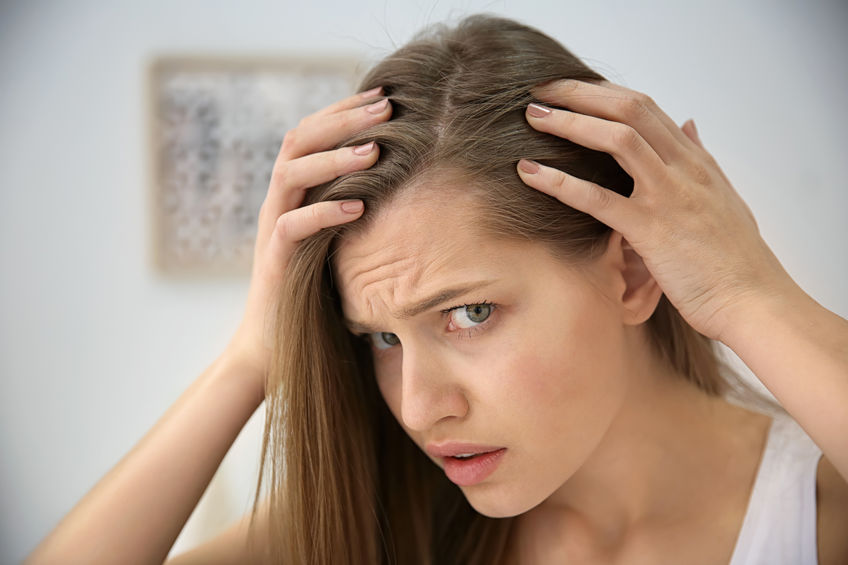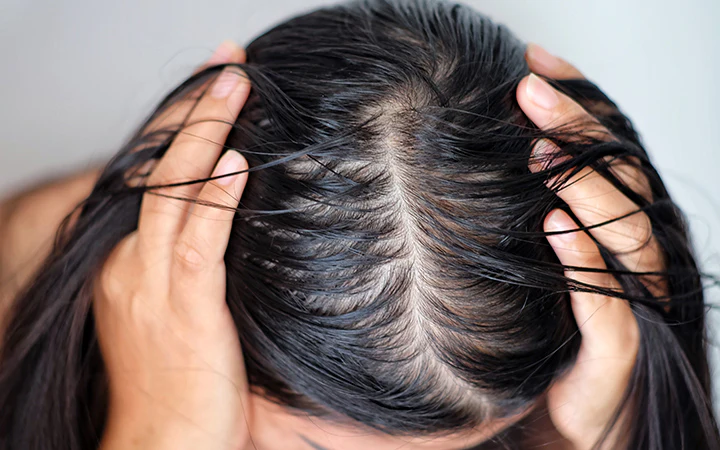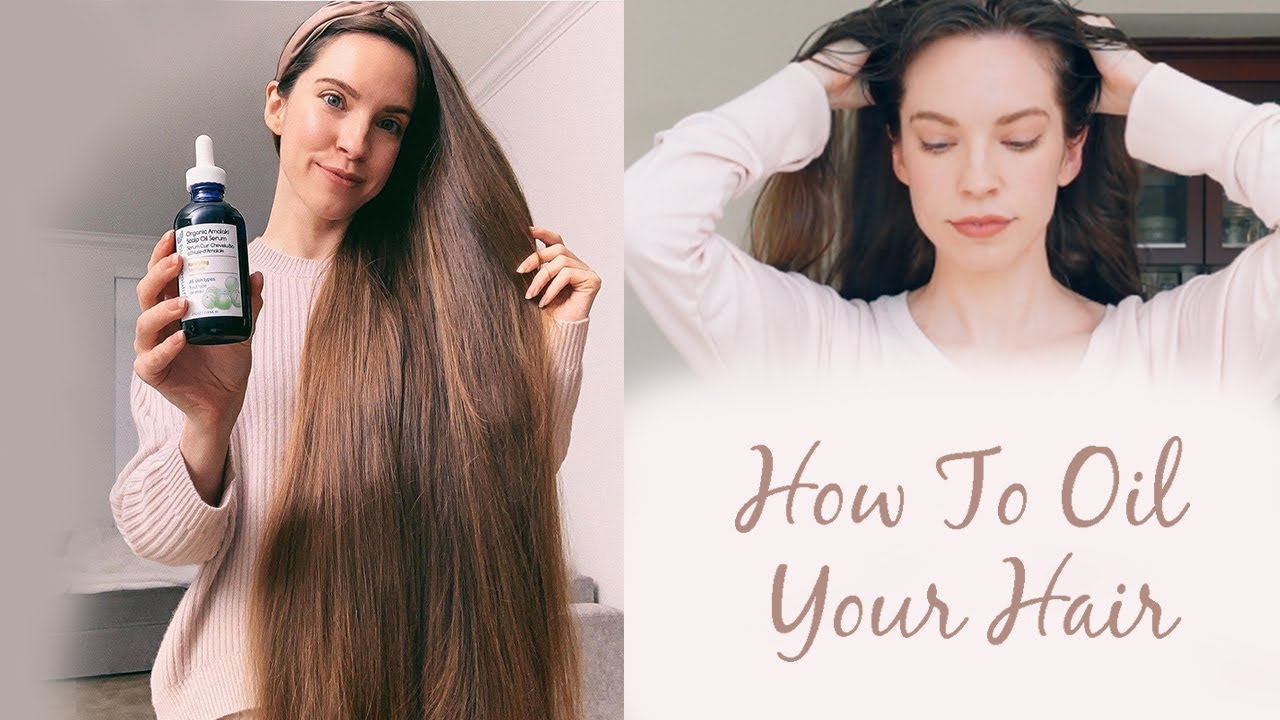Have you ever felt like your hair won’t grow any longer? Maybe it’s stopped growing past a certain length, or you’ve noticed thinning in a specific spot. You’re not alone! Many people, just like you, experience these issues. In fact, it’s a common concern among individuals interested in hair health and beauty. In this article, we’ll explore the different factors that affect hair growth, how the hair growth cycle works, and what you can do to promote healthy hair growth.
Understanding the Hair Growth Cycle
Before we dive into the reasons your hair may have stopped growing, it’s essential to understand the natural cycle of hair growth. This cycle has four phases:
- Anagen Phase (Growth Phase): This is the phase when your hair actively grows, and it can last anywhere from 2 to 8 years. About 90% of your hair is in this phase at any given time.
- Catagen Phase (Transition Phase): After the growth phase, hair enters a short transition phase that lasts around 4 to 6 weeks. During this phase, the hair stops growing but doesn’t fall out yet.
- Telogen Phase (Resting Phase): This is when hair “rests” before it sheds. You might notice hair falling out when you wash or brush it. This phase typically lasts 2 to 3 months.
- Exogen Phase (Shedding Phase): Hair naturally sheds from the scalp, making way for new hair to grow. It is normal to shed 50-100 hairs per day.
Hair growth follows this cycle, but when factors disrupt it, growth may slow or stop entirely.
6 Reasons Your Hair Might Not Be Growing
Now that you understand the hair cycle, let’s dive into common reasons why your hair might not be growing as you’d like.
Genetics
Your genes primarily determine your hair growth. The length of your growth cycle (anagen phase) is inherited, which means that some people naturally have shorter cycles than others. Once your hair reaches the end of this cycle, it stops growing, and either breaks off or sheds. If your family has a history of hair thinning or pattern baldness, you may also experience hair loss as you age. Understanding this genetic influence can help you accept and work with your natural hair patterns.
Example: If your parents had thinning hair by their 40s, chances are you may experience something similar. In this case, your hair isn’t actually “stopping” growth—it’s just following your genetic blueprint.
Age
As we age, the hair growth cycle shortens. A growth phase that used to last six years may now only last 2. This means hair doesn’t grow as long as it once did. In addition, older hair tends to be drier due to less oil production from the scalp, leading to more breakage and split ends.
Example: You might notice that in your 20s, your hair grew quickly, but by your 50s, it’s thinner and slower to grow. Hormonal changes, especially after menopause, also play a role in hair thinning for many women.
Poor Diet
Your diet has a direct impact on your hair health. If you’re lacking essential nutrients like iron, vitamin D, zinc, and biotin, your hair won’t grow as well as it should. Hair needs these nutrients to stay strong and healthy.
Example: If your diet is low in iron (found in eggs and chicken) or zinc (found in nuts and red meat), your hair might start thinning or stop growing altogether.
Stress
Stress can cause hair to enter the telogen effluvium phase, which leads to more hair shedding than usual. When your body is under stress, it releases cortisol, a hormone that can disrupt the hair growth cycle and cause temporary hair loss.
Example: If you’ve gone through a stressful event, like moving to a new city or starting a new job, you might notice your hair thinning or shedding more than usual. But remember, hair usually regrows once stress levels are reduced, giving you hope for a healthier, more vibrant mane.
Hair Breakage
Hair breakage can make it seem like your hair isn’t growing, but in reality, it is—you’re just losing it faster than it’s growing. Heat styling, over-processing with chemical treatments, and rough brushing can all lead to split ends and breakage.
Example: If you regularly use a flat iron or blow dryer without heat protection, the high temperatures can weaken your hair, causing it to snap off before it reaches your desired length.
Scalp Issues
A healthy scalp is not just a part of the equation; it’s the key to hair growth. When your scalp is clogged with excess oil, product buildup, or dead skin cells, hair follicles struggle to grow. Conditions like dandruff, psoriasis, or fungal infections can also hinder hair growth. But with the proper knowledge and care, you can ensure your scalp is in the best condition for hair growth.
Example: If you haven’t been properly cleaning your scalp or if you suffer from dandruff, this could explain why your hair isn’t growing. Exfoliating your scalp and using the right products can help.
Tips to Boost Hair Growth
Now that you know why your hair may have stopped growing, let’s talk about how to encourage it to grow again. These simple tips can help create the perfect environment for hair growth, giving you hope for a healthier, more vibrant mane.
Nourish Your Hair From the Inside Out
Make sure you’re eating a balanced diet rich in vitamins and minerals. Consider adding foods high in iron, such as spinach and lentils, vitamin D, found in fatty fish and fortified dairy products, and zinc, present in nuts and seeds, to your meals. You can also take a biotin supplement if needed, but be sure to consult with your doctor first. By nourishing your body with the right nutrients, you can empower yourself to promote healthy hair growth from the inside out.
Keep Your Scalp Clean and Healthy
Use a gentle, sulfate-free shampoo to cleanse your scalp and remove buildup. Regular scalp massages can also improve blood circulation, helping nutrients reach your hair follicles and promoting hair growth. The gentle pressure from the massage can increase blood flow to the scalp, delivering more oxygen and nutrients to the hair follicles.
Avoid Heat Damage
Try to limit how often you use heat-styling tools. If you must use them, always apply a heat protectant first and keep the temperature as low as possible. Letting your hair air-dry is even better!
Trim Your Hair Regularly
It may sound counterintuitive, but trimming your hair every few months can actually help it grow longer. This prevents split ends from travelling up the hair shaft and breaking off.
Manage Stress
Find ways to relax and manage stress. Whether it’s yoga, meditation, or simply taking time for yourself, reducing stress can help stop hair loss and promote new growth.
When to See a Doctor
If you’ve tried these tips and your hair still isn’t growing, it might be time to consult with a doctor. Conditions like thyroid issues, alopecia, or hormonal imbalances could be to blame. A medical professional can offer treatments such as minoxidil or finasteride to help with hair loss.
Final Thoughts
Hair growth is a complex process influenced by factors like genetics, age, diet, and stress. By understanding your hair’s growth cycle and making a few lifestyle changes, you can help your hair grow longer and stronger. Whether it’s improving your diet, using the right products, or giving your scalp some extra TLC, your hair can thrive again!
Remember, patience is key. With the proper care, you can achieve healthier, longer hair!



